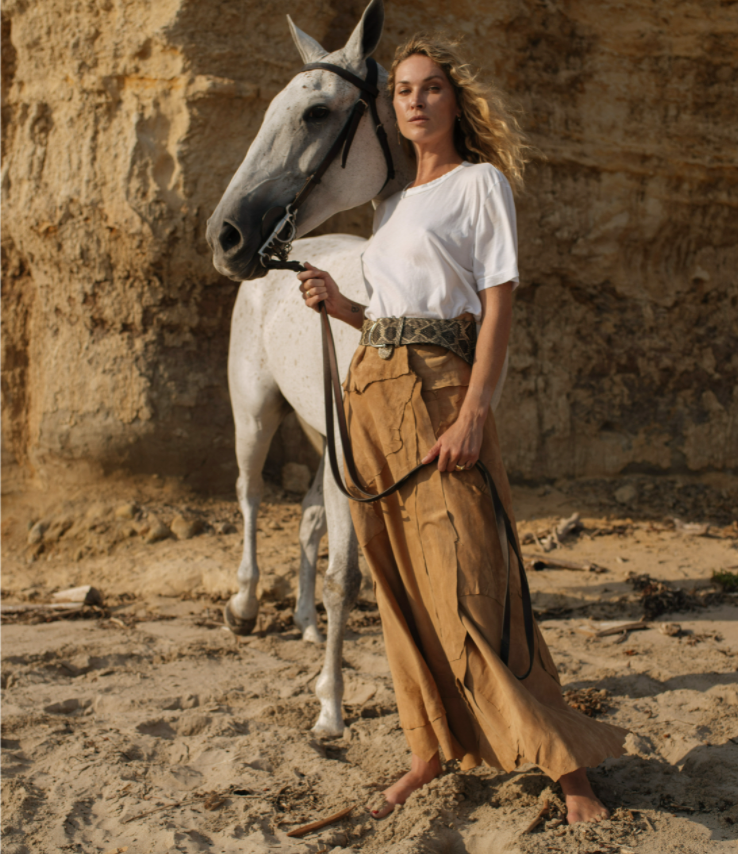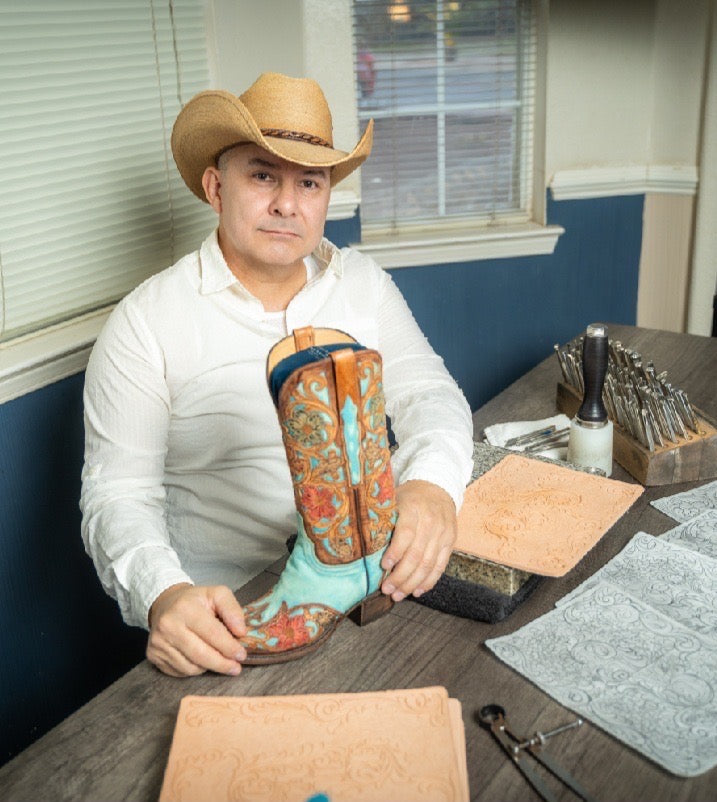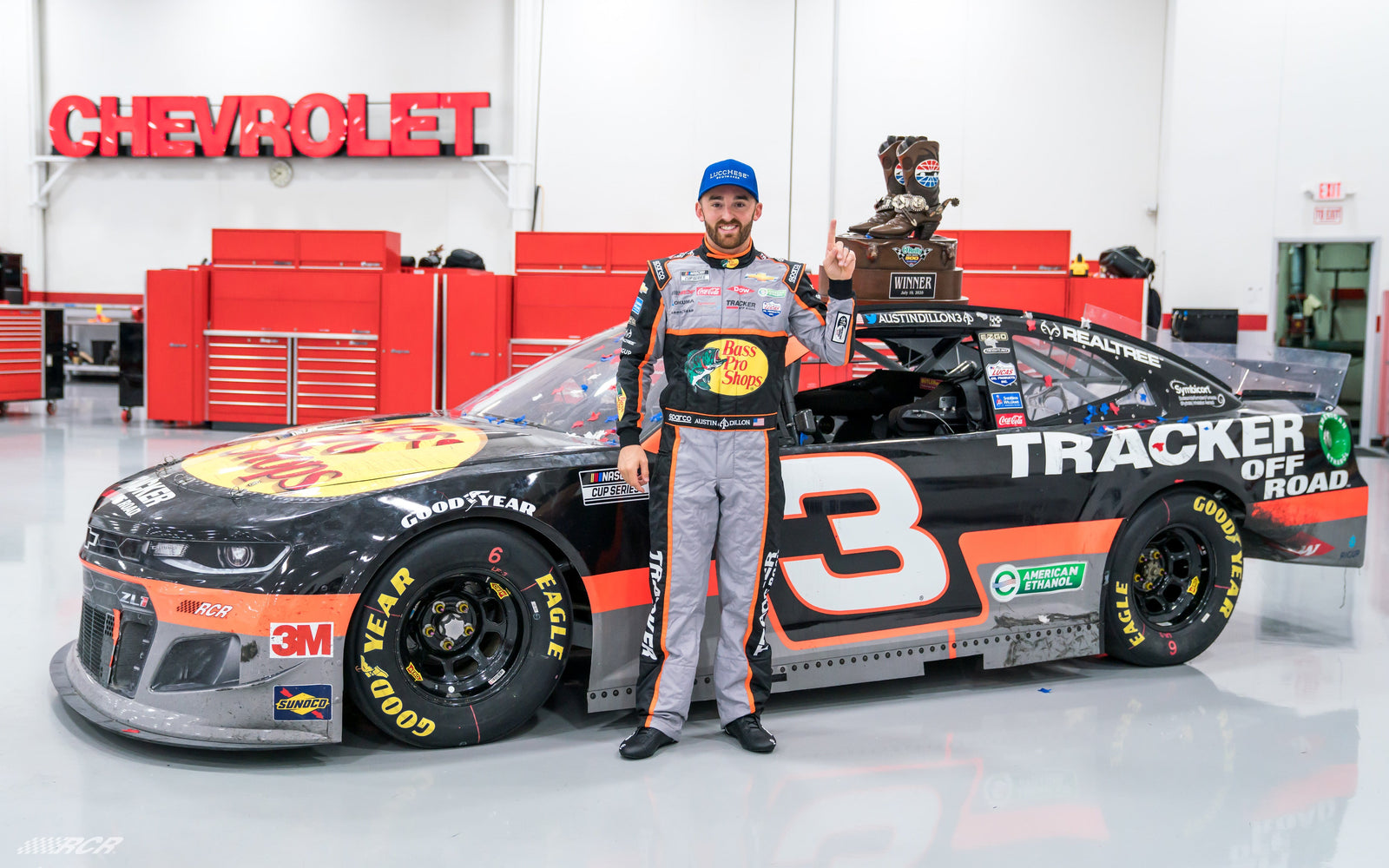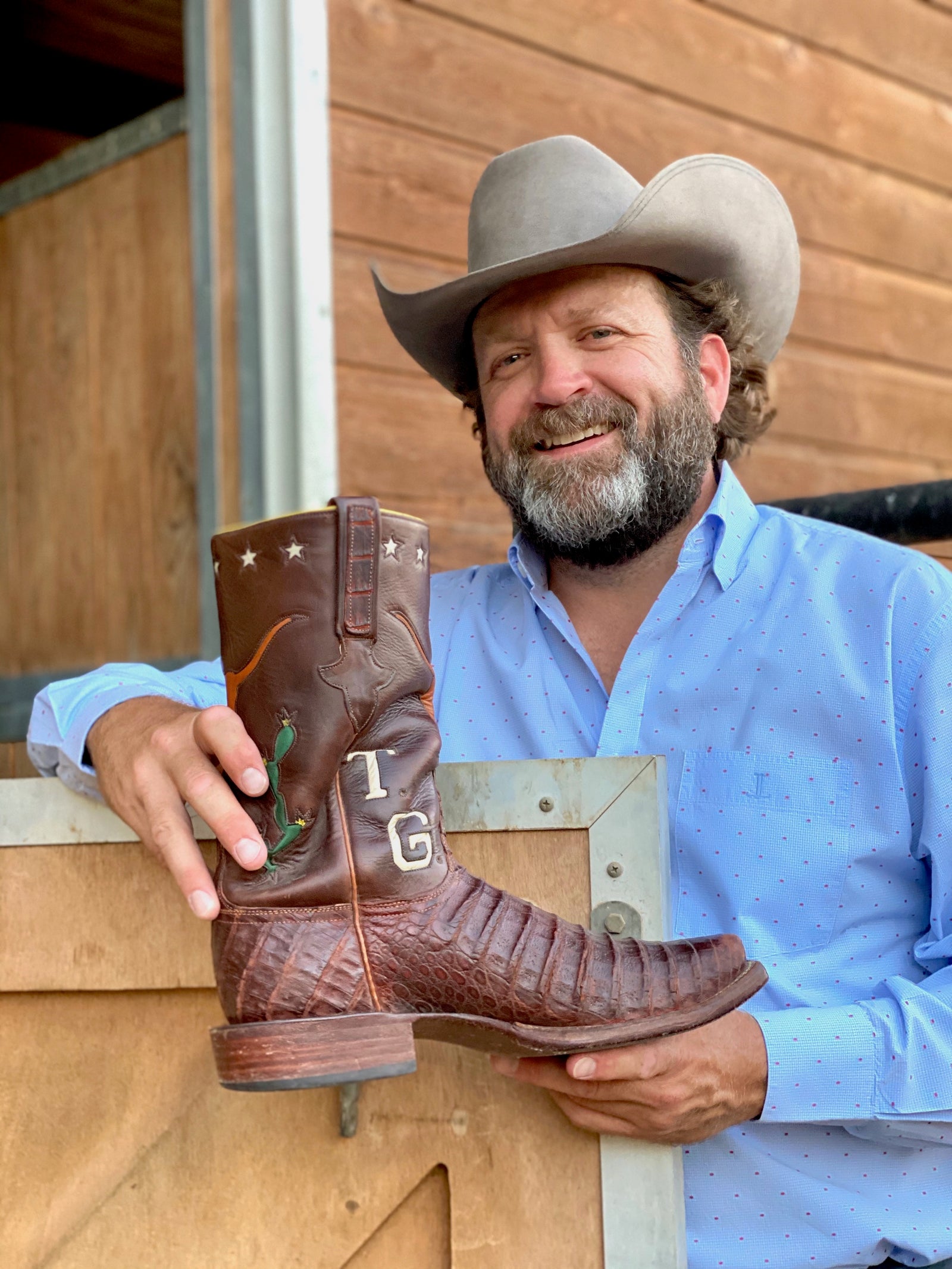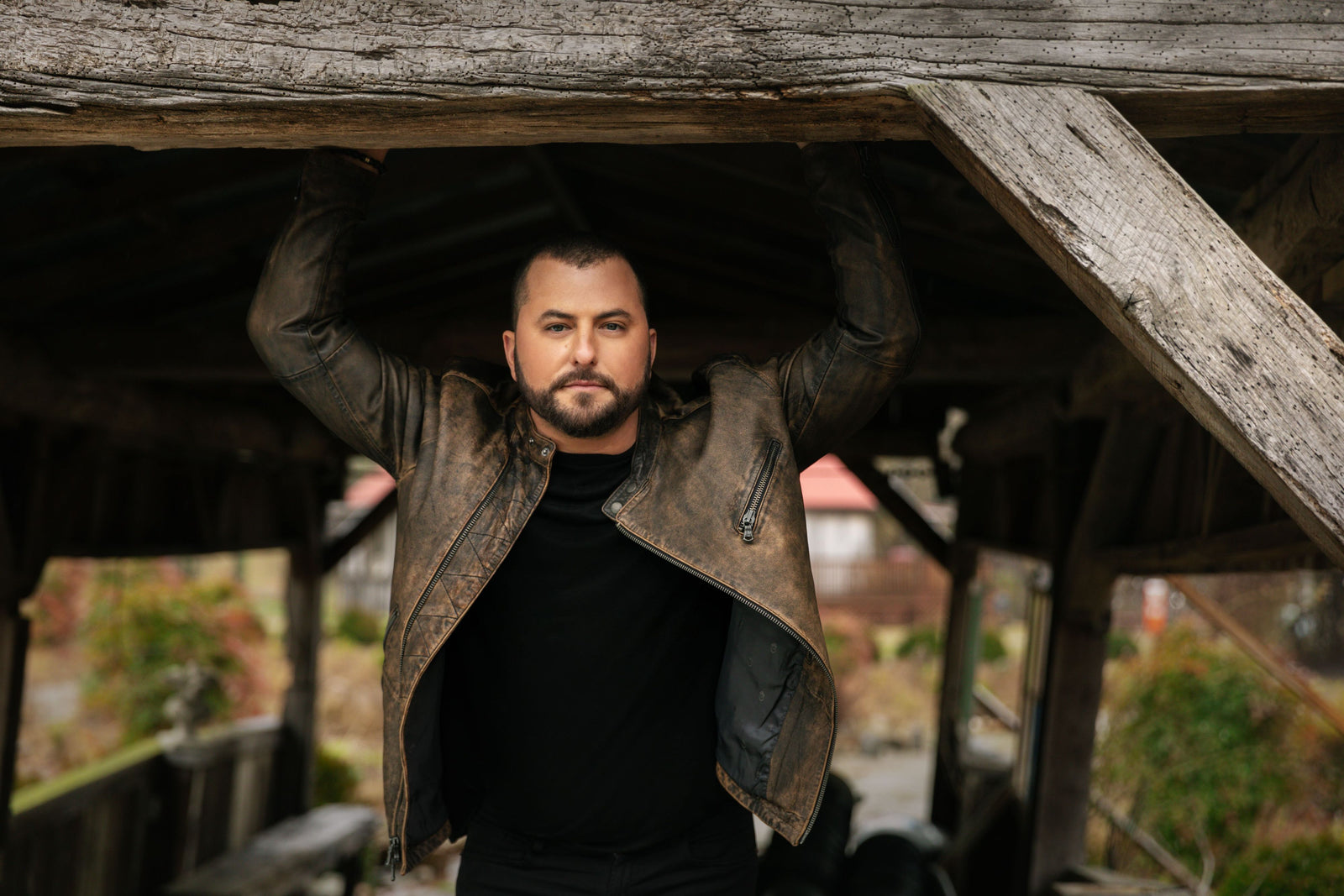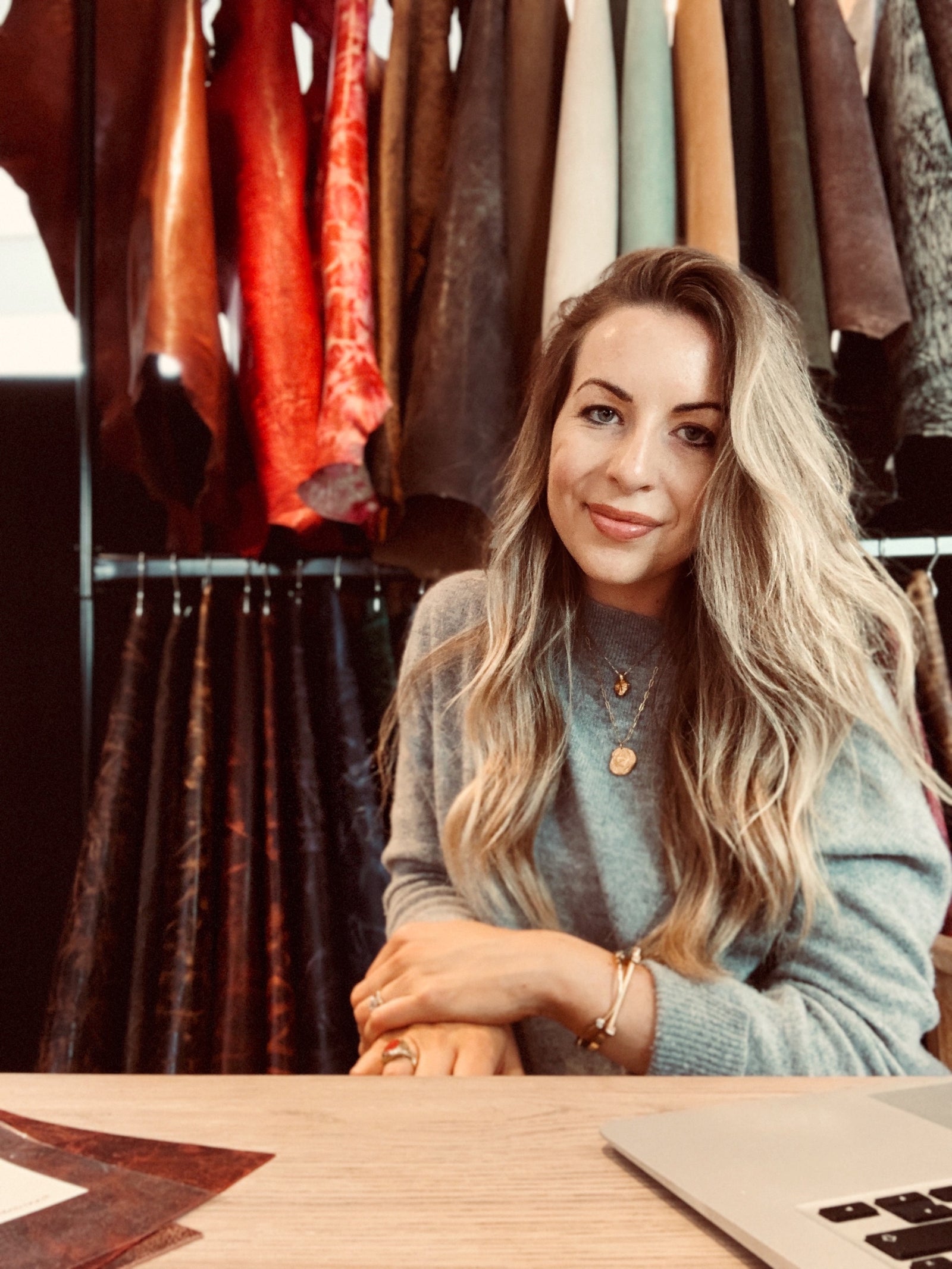
Charlotte Tusting is a fifth-generation Mad Dog® specialist who lives in a small village in the Northamptonshire countryside (England) only about half an hour from where she grew up. Charlotte lived in Nottingham for a few years whilst she gained her BA Honors in History at Nottingham University, and then after a few short stints working in other industries such as the alcohol industry selling whiskey, vodka and champagne, she eventually settled back home and joined the family business, Tusting & Burnett.
Tell us about Tusting & Burnett.
We are now a fifth-generation family business, originally founded in 1938 by my great grandfather Harrold Tusting and his Scottish wife Bessie Burnett, and her father. The original tannery was situated in the heart of the English countryside and in the midst of the thriving Northamptonshire leather and shoe trade. Sadly, now a lot of the tanneries and shoe manufacturing in England have been lost, but Northamptonshire still remains a natural hub for the leather industry. We are immensely proud of the fact that we have been able to continue to add to the already rich heritage of tanning in this region.


Charlotte and her father Robert Tusting after speaking at the leather sellers hall in London as President of the LHTBI Charitable Institution.
What is your role at Tusting & Burnett? What’s your day-to-day schedule like?
Being a family business, with myself, my father, and brother in the office, we all get involved in a little bit of everything. However, I spend most of my time thinking of new finishes, selecting our new color palettes for the season, and then visiting brands and attending seasonal trade fairs to present our collections.
I have always loved fashion and design, with a very hefty Vogue collection comprising of every edition since 1999 (that takes up most of our garage!) So, I am so lucky that I get to work so closely with so many talented designers and luxury design houses to develop new and exciting finishes to create a truly bespoke leather article that is tailored to their needs. Life in the English countryside is definitely a lot slower paced than the world of fashion, and the big cities that I frequently travel to with work, so it is always nice to come back home and relax after a busy period traveling. It is not uncommon for me to be in New York, Dallas, El Paso, California, and Milan all in the space of a couple of weeks.

Tusting & Burnett specializes in classic and high fashion goat leathers using the finest quality veg-tanned goat skins. What makes mad dog goat special? What inspired the creation of your signature mad dog goat leather?
Aside from the very special African Goat Skins that we use for this article; Mad Dog® is a completely aniline leather that uses a unique combination of oils and waxes to give the leather its striking, waxy crunch pull up. The unique, shrunken grain lines of the African Goat can then be seen underneath the waxy surface giving the leather a truly unique appearance, adding so much character to every product it is used in. Due to the natural oils and waxes used in the finish the leather burnishes up beautifully over time and only becomes more beautiful with use, developing a deep, rich color and natural Patina. Any scratches and scuff marks can be easily polished and buffed into the leather only adding to the character.

Left: Tan African Veg Tanned Goat
Right: Shrunken Nubuck African Goats
My father came up with this finish and name over 30 years ago now and the inspiration for the name comes from the Noel Coward lyrics “Mad Dogs and Englishmen go out in the mid-day sun.” When developing the leather, it was probably hard to imagine how popular and world renowned it would grow to become. At the time, the trend was for pigmented, finished, perfect looking cow calf that had little, to no character. So really, we were swimming against the tide and trying to find other like-minded people who were willing to experiment with natural, distressed leathers and saw the beauty in the imperfect. We knew as soon as anyone tried it, they would love it.
Always looking at trends within other industries – furniture, antiques, and the beautifully natural grains of the Burr Walnut, which are technically a defect, but actually only enhances the beauty and character of the wood and makes it more desirable. We were firm in the belief that this was also true for leather, and our goat skins in particular, which historically up until that point had only been used for linings. It was so good to finally find a partner in Lucchese who shared our vision of creating an instant heirloom look. A boot which looked like it already had a story to tell, worn by many cowboys even whilst fresh off the shelf. We realized there had been a breakthrough when one evening the fax machine started up and didn’t stop printing orders for a few hours. This vintage look is now seen everywhere in fashion and leather – they say imitation is the sincerest form of flattery, but none can match the original!
How are these skins sourced? Where do you get them?
Our Native Tanned African ‘Sokoto’ Goat skins all originate from a farming cooperative in Africa. The animals are all raised by the farmers on their land and then when it is time for the skins to be harvested each and every part of the animal is used, and the money raised from the sale of the skins helps to support the entire community. Each skin is tanned in clay pits using only the Bagaruwa seeds from the Nilotica trees which grow on their land using centuries old techniques and all-natural bio-chemicals, with no electricity or heavy machinery.

The Bagaruwa Seeds that are used as the tanning agent.
Explain how your leather can be tailored to each customers’ requirements.
Although we present our new range of leathers each season, as all of our production is made to order, we will then work with each brand to develop the leather further to suit their needs. Whether that be adjusting the tannage for added softness, altering the milling processes to create a more shrunken grain pattern, adding waterproof capabilities, stonewashing the skins in the drum or hand staining the skins, each aspect of the leather can be tailored for every different project resulting in a truly unique end product.
How can you create a variety of different looks with mad dog goat?
I am still amazed that after all of these years, designers are still coming up with new ways to finish our Mad Dog® leather. Since the first Lucchese Mad Dog® Boot was made more than 30 years ago now with then Lucchese designer John McAlpin, we have seen the boots burnished and polished with a natural carnauba wax to give a classic, rich, burnished finish. Alternatively, after wet lasting, the boots can largely be left as they are with maybe just burnished toe and heel accents.

I have also seen Mad Dog® boots that have been stone washed to create a really cool, distressed finish as well as hand staining and even two tone degrade/dip-dye effects that fade from ocean blue back into black across the boot.

This features their exciting new tie-dye leather and a dip dyed effect Lucchese Mad Dog boot.
Tell us about the techniques such as finishing each skin by hand.
We still use many different traditional, artisan methods in our finishing such as hand dyeing, hand scrunching, hand tamponation, and other finishes that cannot be machine replicated.
How many separate operations does the finish product require? How long does it usually take from start to finish?
Before the skins even reach us in England, they have already been through the centuries old tanning process described earlier to get them into their unique veg-tanned crust state. We then re-tan the skins in large wooden drums, adding in various fat liquors and light and color fastness properties before dyeing the skins to the required color and then setting them out to dry. I don’t want to give too much away regarding the finish, but the oils and waxes are then applied to the surface of the skin and left to cure over night at each stage before the final process of either milling the skins in large wooden drums for our softer, vintage Mad Dog® articles or in the case of the Original Mad Dog® each skin is individually rolled and scrunched by hand. From start to finish, the processing of each skin probably takes about four weeks.

Left: Mad Dog on a horse and skins drying on the toggle dryer.
Middle: Mad Dog Dyed Crust waiting for finishing.
Right: Mad Dog skins hand scrunched and ready to be packed up.
Tell us about your favorite leathers. Which do you like to wear on a cowboy boot? What is most popular and why?
Aside from the Mad Dog® leather, which just seems to fit the western boot aesthetic so well, and is by far our most popular leather, I love the classic black cherry polished ‘Santini’ leather we make for a dressier occasion, and I can never seem to stay away from a suede or nubuck boot no matter how impractical it may be for our famous English weather!
Do you have a big cowboy boot collection? If so, how many?
I think after visiting Dallas a few times each year for more than 10 years now, I find myself more and more naturally drawn to the western aesthetic. Although it is not very often you come across a true cowboy boot in a store in England, I would say nearly all of my footwear has a slightly western aesthetic to it, whether it be a Cuban heeled bootie, western-inspired detailing, and fringing, or roper style knee-high boots.
What is your favorite Lucchese boot?
My father has an amazing pair of hand-stained Mad Dog® boots with giant ‘Gnarly Gator’ American Alligator on the toe. You can see immediately looking at the boots all the hours or craftsmanship and the care and attention to detail that has gone into making the boots at every stage. Even down to the distressed heel and antiqued hardware.

Left: My father’s hand-stained Mad Dog and Giant Gator Lucchese boot.
Right: One of the very first Lucchese boots made from Mad Dog.
What do you feel every day when you put on your Lucchese boots?
When I think of Lucchese, I immediately think of the craftsmanship and how fascinating I find it to walk around the factory in El Paso seeing the many processes of the boots being made so meticulously by hand at every stage. In addition, the heritage you are a part of when you own a pair of Lucchese boots. I will always remember the feeling standing on the large leather-bound Lucchese measurement book having my feet drawn around and legs and ankles measured with my sizes noted down alongside the likes of all the famous faces who had previously stood in that same spot, albeit in different shoes!
Click here to shop our Mad Dog goat leather boots.


